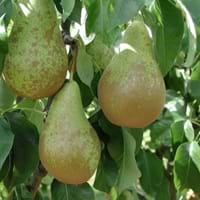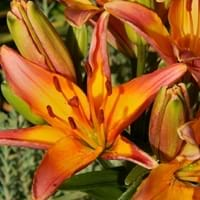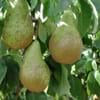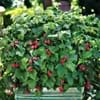Life Span
Perennial
Perennial
Type
Fruit
Bulb or Corm or Tuber
Origin
Europe, Western Asia
Hybrid origin
Types
Not Available
Not available
Number of Varieties
Not Available
Habitat
Dappled Shade, Sunny Edge, Woodland Garden Secondary
subtropical regions, Temperate Regions
USDA Hardiness Zone
5-9
4-8
Sunset Zone
2a, 2b, 3a, 3b, 4, 5, 6, 7, 8, 9, 14, 15, 16, 17, 18
21,22
Habit
Oval or Rounded
Upright/Erect
Flower Color
White
Gold, Pink
Flower Color Modifier
Bicolor
Bicolor
Fruit Color
Yellow, Red, Yellow green
Green, Brown
Leaf Color in Spring
Dark Green
Green, Dark Green
Leaf Color in Summer
Dark Green
Light Green
Leaf Color in Fall
Purple, Dark Green, Burgundy
Several shades of Green
Leaf Color in Winter
Light Green
Light Green
Leaf Shape
Elliptic
Lanceolate
Plant Season
Spring, Summer, Fall
Spring, Summer
Sunlight
Full Sun
Full Sun, Partial Sun
Growth Rate
Medium
Medium
Type of Soil
Clay, Loam, Sand
Clay, Loam, Sand
The pH of Soil
Neutral
Acidic, Neutral
Soil Drainage
Well drained
Well drained
Bloom Time
Spring
Early Summer, Summer
Tolerances
Drought
Drought
Where to Plant?
Container, Ground
Ground, Pot
How to Plant?
Seedlings
Bulbs
Plant Maintenance
Medium
Medium
Watering Requirements
Average Water Needs
Average Water Needs
In Summer
Lots of watering
Lots of watering
In Spring
Moderate
Moderate
In Winter
Average Water
Average Water
Soil pH
Neutral
Acidic, Neutral
Soil Type
Clay, Loam, Sand
Clay, Loam, Sand
Soil Drainage Capacity
Well drained
Well drained
Sun Exposure
Full Sun
Full Sun, Partial Sun
Pruning
Remove damaged leaves, Remove dead branches, Remove dead leaves
Remove damaged leaves, Remove dead branches, Remove dead leaves
Fertilizers
All-Purpose Liquid Fertilizer
All-Purpose Liquid Fertilizer
Pests and Diseases
Bacterial Diseases, Black rot, Fungal Diseases
Red blotch
Plant Tolerance
Drought
Drought
Flower Petal Number
Single
Single
Foliage Texture
Medium
Medium
Foliage Sheen
Glossy
Glossy
Attracts
Birds, Butterflies
Hummingbirds
Allergy
Mouth itching, Throat itching
Not Available
Aesthetic Uses
Showy Purposes
Beautification, Bouquets
Beauty Benefits
Not Available
Not Available
Environmental Uses
Air purification
Air purification
Medicinal Uses
Astringent, Febrifuge, Sedative
Not Available
Part of Plant Used
Fruits
Flowers
Other Uses
Used As Food
Showy Purposes
Used As Indoor Plant
No
No
Used As Outdoor Plant
Yes
Yes
Garden Design
Edible, Fruit / Fruit Tree, Topiary / Bonsai / Espalier
Container, Cutflower, Feature Plant, Mixed Border
Botanical Name
Pyrus Communis
LILIUM 'Ladylike'
Common Name
Dessert Pear, Forelle Pear, Forellenbirne, Pear
Asiatic Lily, Ladylike Lily
In Hindi
Forelle Pear
Ladylike lily
In German
Forelle Pear
Ladylike lily
In French
Forelle Pear
Ladylike lily
In Spanish
Forelle Pear
Ladylike lily
In Greek
Forelle Pear
Ladylike lily
In Portuguese
Forelle Pear
Ladylike lily
In Polish
Forelle Pear
Ladylike lily
In Latin
Forelle Pear
Ladylike lily
Phylum
Magnoliophyta
Not Available
Class
Magnoliopsida
Liliopsida
Family
Rosaceae
Liliaceae
Clade
Angiosperms, Eudicots, Rosids
Angiosperms, Monocots
Tribe
Not Available
Not Available
Subfamily
Not Available
Not Available
Properties of Forelle Pear and Ladylike Lily
Wondering what are the properties of Forelle Pear and Ladylike Lily? We provide you with everything About Forelle Pear and Ladylike Lily. Forelle Pear has thorns and Ladylike Lily doesn't have thorns. Also Forelle Pear does not have fragrant flowers. Forelle Pear has allergic reactions like Mouth itching and Throat itching and Ladylike Lily has allergic reactions like Mouth itching and Throat itching. Compare all the properties and characteristics of these two plants. Find out which of these plant can be used as indoor plant. If you are interested to decorate your house and garden, find out aesthetic uses, compare them and select the plant which will beautify your surrounding. Along with beautification, try comparing medicinal and edible uses of Forelle Pear and Ladylike Lily and you can choose the plant having best and most benefits.
Season and Care of Forelle Pear and Ladylike Lily
Season and care of Forelle Pear and Ladylike Lily is important to know. While considering everything about Forelle Pear and Ladylike Lily Care, growing season is an essential factor. Forelle Pear season is Spring, Summer and Fall and Ladylike Lily season is Spring, Summer and Fall. The type of soil for Forelle Pear is Clay, Loam, Sand and for Ladylike Lily is Clay, Loam, Sand while the PH of soil for Forelle Pear is Neutral and for Ladylike Lily is Acidic, Neutral.
Forelle Pear and Ladylike Lily Physical Information
Forelle Pear and Ladylike Lily physical information is very important for comparison. Forelle Pear height is 370.00 cm and width 300.00 cm whereas Ladylike Lily height is 35.60 cm and width 25.40 cm. The color specification of Forelle Pear and Ladylike Lily are as follows:
Forelle Pear flower color: White
Forelle Pear leaf color: Dark Green
Ladylike Lily flower color: Gold and Pink
- Ladylike Lily leaf color: Green and Dark Green
Care of Forelle Pear and Ladylike Lily
Care of Forelle Pear and Ladylike Lily include pruning, fertilizers, watering etc. Forelle Pear pruning is done Remove damaged leaves, Remove dead branches and Remove dead leaves and Ladylike Lily pruning is done Remove damaged leaves, Remove dead branches and Remove dead leaves. In summer Forelle Pear needs Lots of watering and in winter, it needs Average Water. Whereas, in summer Ladylike Lily needs Lots of watering and in winter, it needs Average Water.





